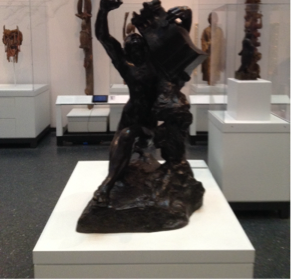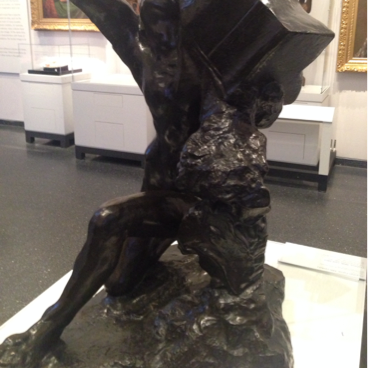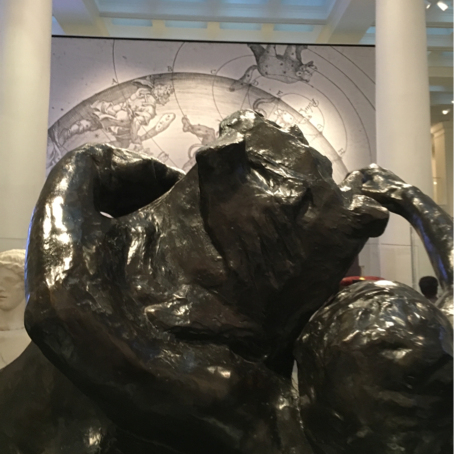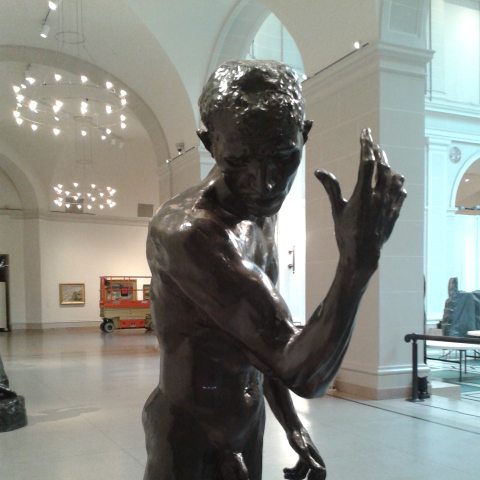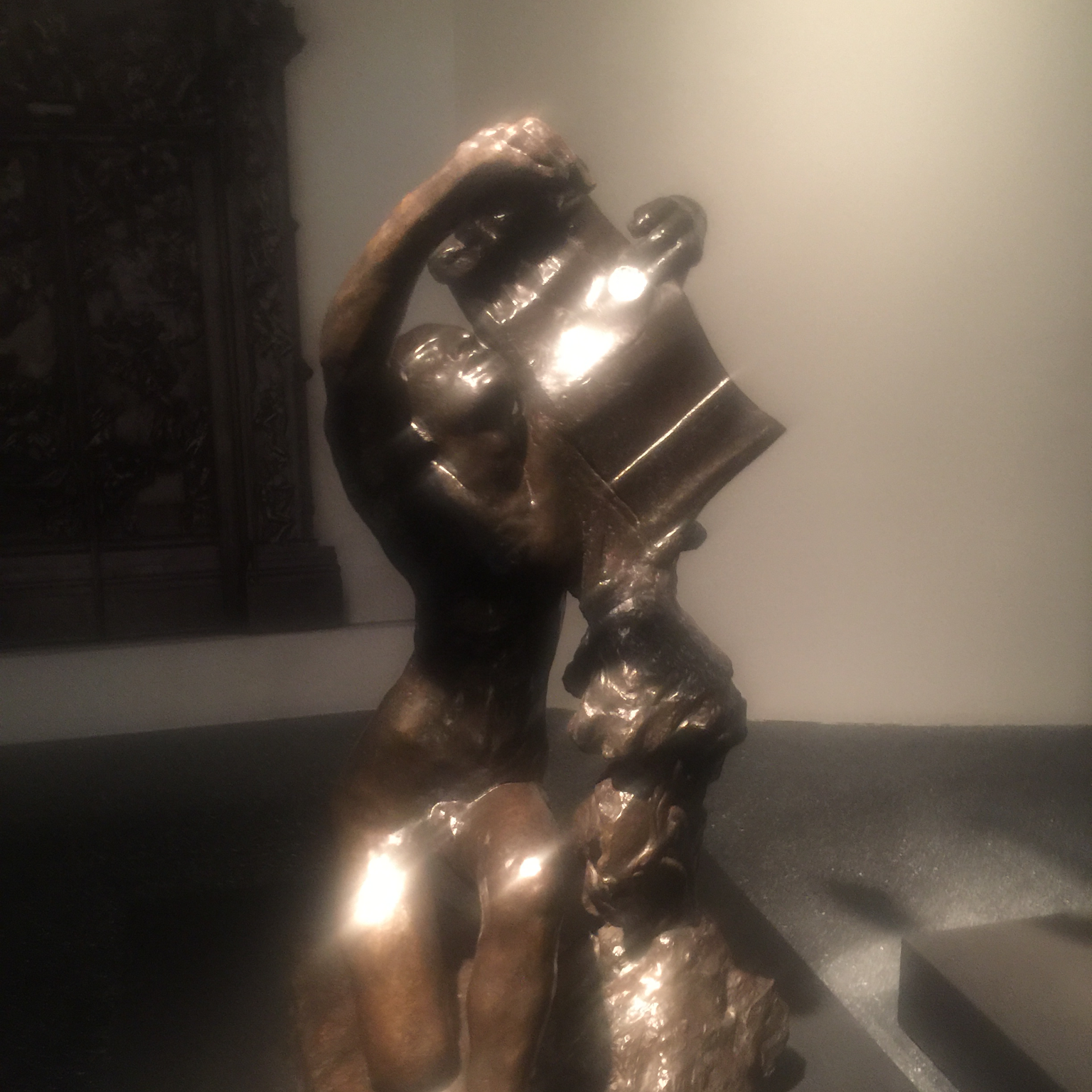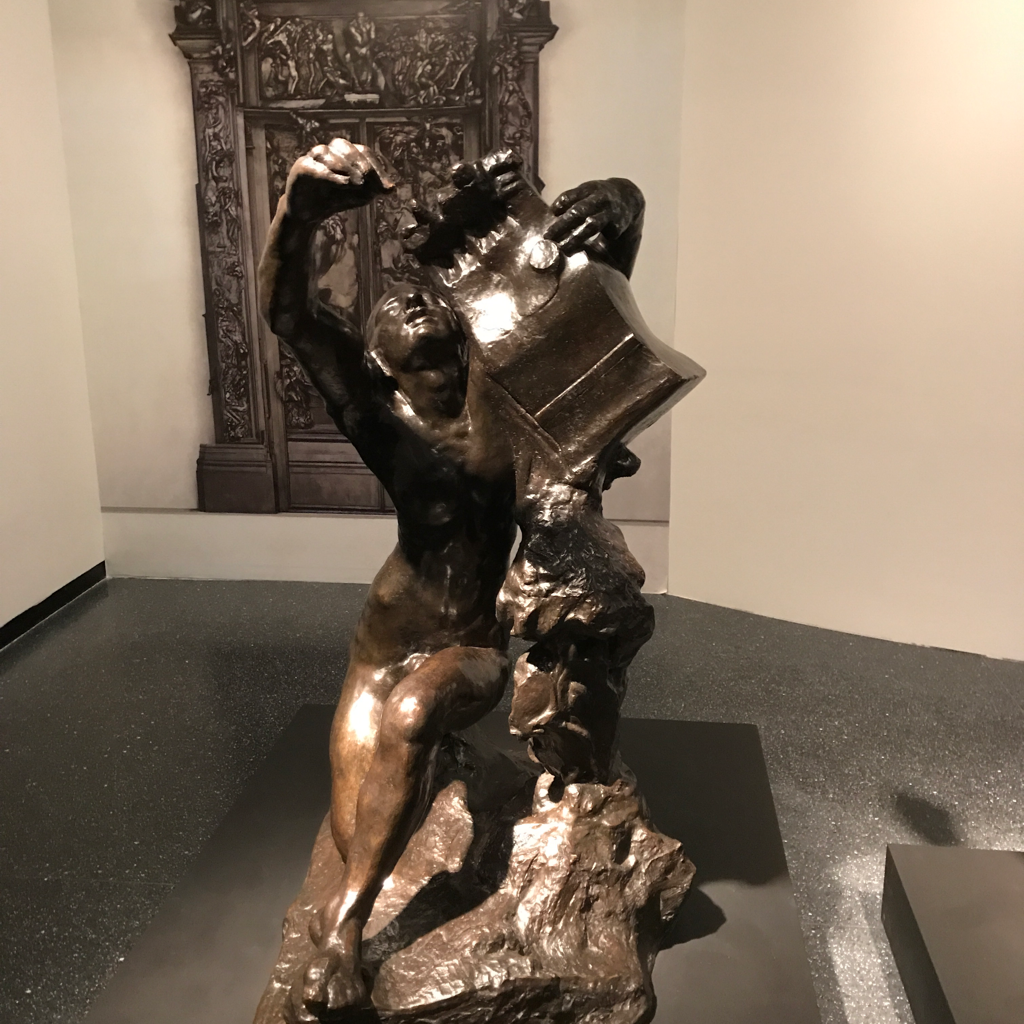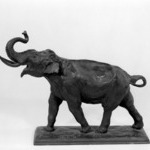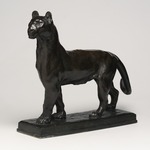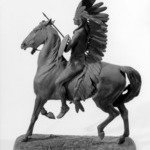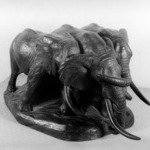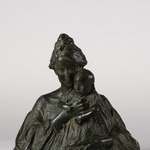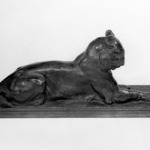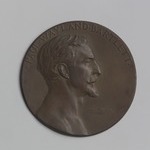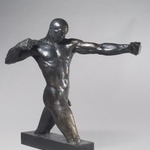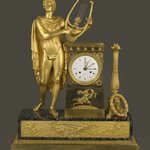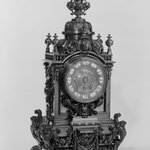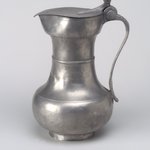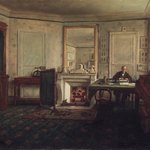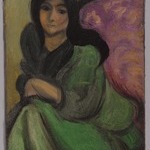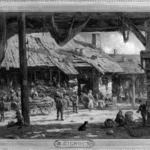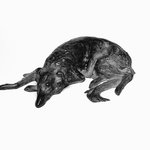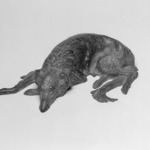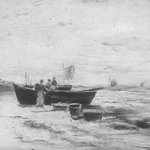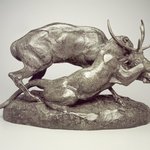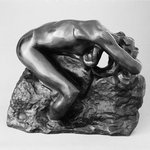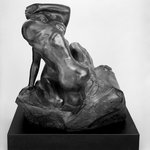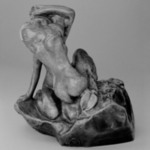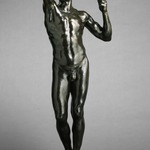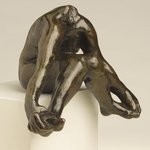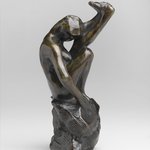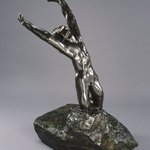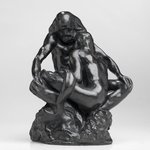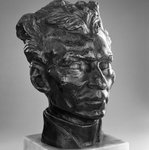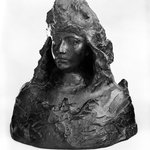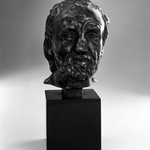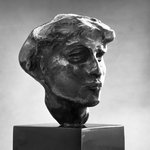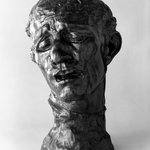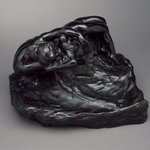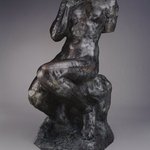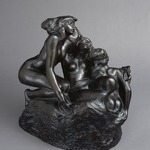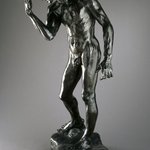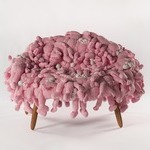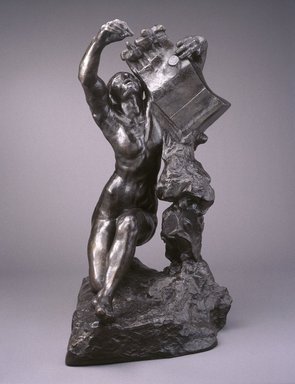
Orpheus (Orphée)
European Art
Here, Rodin presents the poet and musician Orpheus, who according to myth descended into the underworld to rescue his dead lover, Eurydice. Orpheus played his lyre for Hades, who agreed to free Eurydice if Orpheus did not turn back to look at her while escorting her back to the upper world. Unable to resist, he glanced back at her too soon and lost her again forever.
It is unclear which moment Rodin is depicting. Is it defeat, desire, or exultation that produces Orpheus’s upstretched torso and expression? Some of the ambiguity can be explained by the fact that, in its original form, the sculpture included the figure of Eurydice hovering over Orpheus’s shoulder; one of her hands can still be seen on the back. As Rodin’s own description of the work reveals, removing Eurydice allowed him to better convey the many contradictory emotions and temporal dislocations that were his true subject:
I have represented Orpheus at the moment when having tuned his lyre for the infernal chorus and having been awarded the coveted prize of Eurydice he sinks back overcome by the fatigue of his wanderings and the memory of his past anguish. One folded leg partly supports his failing body and his left hand upholds the lyre, while his right hand is extended in supplication. He is to lose Eurydice again, but he does not suspect this now, when the bliss of regaining her has broken the long strain of suspense and suffering.
It is unclear which moment Rodin is depicting. Is it defeat, desire, or exultation that produces Orpheus’s upstretched torso and expression? Some of the ambiguity can be explained by the fact that, in its original form, the sculpture included the figure of Eurydice hovering over Orpheus’s shoulder; one of her hands can still be seen on the back. As Rodin’s own description of the work reveals, removing Eurydice allowed him to better convey the many contradictory emotions and temporal dislocations that were his true subject:
I have represented Orpheus at the moment when having tuned his lyre for the infernal chorus and having been awarded the coveted prize of Eurydice he sinks back overcome by the fatigue of his wanderings and the memory of his past anguish. One folded leg partly supports his failing body and his left hand upholds the lyre, while his right hand is extended in supplication. He is to lose Eurydice again, but he does not suspect this now, when the bliss of regaining her has broken the long strain of suspense and suffering.
CAST BY
Émile Godard Fondeur, Paris
MEDIUM
Bronze
DATES
1908, cast 1980
DIMENSIONS
57 1/2 x 30 x 49 1/4 in. (146.1 x 76.2 x 125.1 cm) (show scale)



MARKINGS
Back, proper right: "E. GODARD FOND."
Base, proper right: "© by Musée Rodin 1980"
SIGNATURE
Base, proper left: "A. Rodin"
INSCRIPTIONS
Base, proper left: "No 7"
COLLECTIONS
European Art
ACCESSION NUMBER
84.75.3
CREDIT LINE
Gift of the Iris and B. Gerald Cantor Foundation
EXHIBITIONS
MUSEUM LOCATION
This item is not on view
CAPTION
Auguste Rodin (French, 1840–1917). Orpheus (Orphée), 1908, cast 1980. Bronze, 57 1/2 x 30 x 49 1/4 in. (146.1 x 76.2 x 125.1 cm). Brooklyn Museum, Gift of the Iris and B. Gerald Cantor Foundation, 84.75.3. Creative Commons-BY (Photo: Brooklyn Museum, 84.75.3_SL1.jpg)
EDITION
Edition: 7/12
IMAGE
overall, 84.75.3_SL1.jpg. Brooklyn Museum photograph
"CUR" at the beginning of an image file name means that the image was created by a curatorial staff member. These study images may be digital point-and-shoot photographs, when we don\'t yet have high-quality studio photography, or they may be scans of older negatives, slides, or photographic prints, providing historical documentation of the object.
RIGHTS STATEMENT
Creative Commons-BY
You may download and use Brooklyn Museum images of this three-dimensional work in accordance with a Creative Commons license. Fair use, as understood under the United States Copyright Act, may also apply.
Please include caption information from this page and credit the Brooklyn Museum. If you need a high resolution file, please fill out our online application form (charges apply).
For further information about copyright, we recommend resources at the United States Library of Congress, Cornell University, Copyright and Cultural Institutions: Guidelines for U.S. Libraries, Archives, and Museums, and Copyright Watch.
For more information about the Museum's rights project, including how rights types are assigned, please see our blog posts on copyright.
If you have any information regarding this work and rights to it, please contact copyright@brooklynmuseum.org.
RECORD COMPLETENESS
Not every record you will find here is complete. More information is available for some works than for others, and some entries have been updated more recently. Records are frequently reviewed and revised, and we welcome any additional information you might have.


